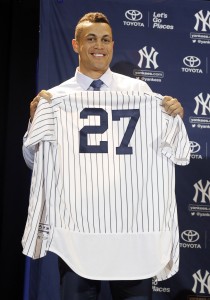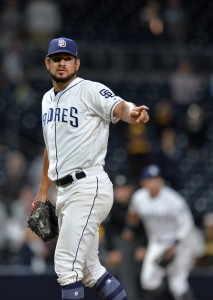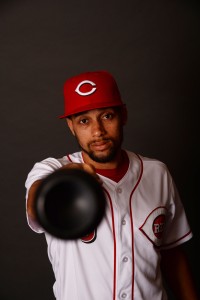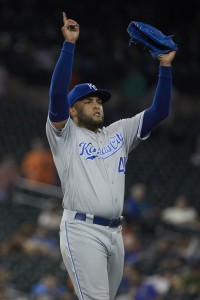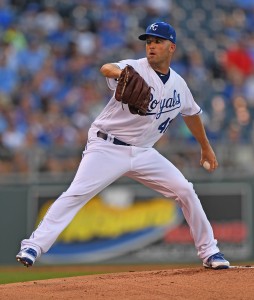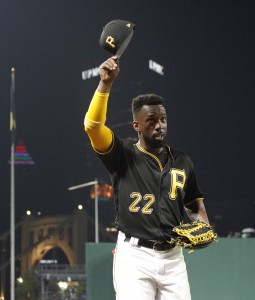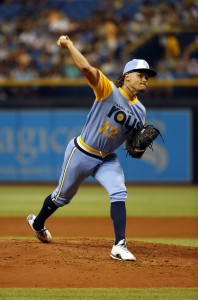While it’s true that we haven’t yet seen all of the anticipated activity in the trade and free agent markets, that likely won’t stop teams and players from considering extensions. This is around the time of year that it’s typical to begin seeing deals.
Last year was no exception, with players such as Danny Duffy, Wil Myers, and Kole Calhoun among those inking extensions in January and others following throughout the spring. In some cases, the pressures of arbitration agreements help to spur broader talks; the Cardinals, for instance, locked up Carlos Martinez for the long run rather than just nailing down a single-season salary.
With another extension season perhaps soon to be underway, it seems like an opportune time to look at some of the top such contracts ever agreed upon. (We did something similar last year with some arbitration records.) Of course, we utilized MLBTR’s extensive extension tracker to produce the results.
All of the above players were at least eligible for arbitration. But some of the most interesting deals occur in situations where a player has yet even to reach the stage in which their salary will begin to rise significantly. In such cases, teams often possess quite a bit of leverage, though the relative lack of MLB track record of those players can perhaps also increase the risk.
Here are a few important market markers for pre-arb extensions:
Earliest Extension
Jon Singleton, Astros: Zero days of service
At some point, this’ll likely become a shared record. For now, though, Singleton is the only player who has ever signed an extension prior to (or, in his case, at the point of) his first MLB promotion. While the contract promised Singleton only $10MM, it gave him both protection and some earning upside, as I explained at the time. While Singleton is still young enough to turn things around, he has not yet panned out at the MLB level, so the deal has worked out quite well for him.
Biggest Contract, Less Than One Year Of MLB Service
Tim Anderson, White Sox: 6 years, $25MM (plus two options)
This contract type was once almost exclusively in the domain of the Rays, who locked up Evan Longoria (link), Matt Moore (link), and Chris Archer (link) to early deals. (Salvador Perez of the Royals is another key example.) But the Sox came through with the most recent, and most lucrative, deal for a player with less than one year of MLB service. Anderson had played for most of a season at the game’s highest level, so it wasn’t as if he had yet to put down any track record there. But it still seemed like a not-insignificant risk for a player with some definite kinks to iron out. Anderson struggled in the first year after signing the deal, though there’s plenty of time for him to make good on it.
Biggest Contract, Between One And Two Years Of MLB Service
Andrelton Simmons, Braves: 7 years, $58MM
Though Simmons never seemed likely to draw massive arbitration salaries, since so much of his value came from his glovework, he still holds the record for the largest deal for a player with less than two years of MLB service. That deal topped Ryan Braun’s longstanding record of $45MM. Most recently, Christian Yelich of the Marlins comes in just behind Simmons with a deal that promised him just under $50MM and also included a club option for an eighth season. While the Simmons contract has since been dealt to the Angels, it continues to be an appealing asset — all the more after his outstanding all-around 2017 season.
Biggest Contract, Between Two And Three Years Of MLB Service (Non-Super Two)
Mike Trout, Angels: 6 years, $144.5MM
This deal stands out, and for good reason: Trout is the greatest player of his generation. No other 2+, non-Super Two players have landed in his stratosphere, though some have secured major guarantees. Carlos Gonzalez ($80MM, Rockies), Hanley Ramirez ($70MM, Marlins), Matt Carpenter ($52MM, Cardinals), Andrew McCutchen ($51.5MM, Pirates), Justin Upton ($51.25MM, Diamondbacks), and Rougned Odor ($49.5MM, Rangers) are among them. Since signing, Trout has continued to reel off otherworldly seasons. The 26-year-old almost certainly would have secured his third MVP award in 2017 had he not been limited to 114 games due to a thumb injury.
Biggest Pre-Arb Pitching Contract
Corey Kluber, Indians: 5 years, $38.5MM (plus two options)
Fair to say there’s some added risk discount baked into pitching deals. Kluber became the latest highly accomplished pre-arb hurler to ink a contract with this same essential structure. The dollars have slowly crept upward over the years, but the early-2009 Jon Lester deal with the Red Sox remains the model. Over the years, Yovani Gallardo (link), Trevor Cahill (link), and Chris Sale (link) are among the starters that took this sort of agreement with over two years of MLB service (but not enough to reach arbitration as a Super Two). It’s not really worth treating the 1+ service class any differently; we’ve seen the same apply there, with Madison Bumgarner earning the largest such deal ($35MM) and pitchers like Julio Teheran (link) and Ricky Romero (link) also checking in with similarly structured contracts. Kluber’s age likely prevented him from truly breaking out of the mold, as he was coming off of a Cy Young campaign when he put pen to paper. Since, he has turned in 640 2/3 innings of 2.98 ERA pitching, locking up his second AL Cy Young nod last season.
Biggest Pre-Arb Reliever Contract
Sean Doolittle, Athletics: 4 years, $10MM (plus two options)
It’s not all that surprising to learn that not many pre-arb relievers have signed extensions at all, let alone that none rank among the largest in the game. Perhaps that will begin to change, though, with the bullpen taking on an increasingly prominent role in game management and top-end arms securing rather massive payouts via free agency (and, in some cases, through saves-fueled arbitration cases). The Doolittle contract has worked out quite well despite his injury struggles and the A’s own disappointments on the field. Oakland swapped the contract to the Nationals last summer, cashing in on the high-powered southpaw at a point when he was in good health and throwing well.
Longest Guaranteed Term, Pre-Arb Extension
Ryan Braun, Brewers: 8 years
Unless there’s a longer prior deal that pre-dates our database and isn’t known to this author — if so, let us know in the comments! — the first Braun extension contained the longest fully guaranteed term given to a pre-arb player. (As noted above, its $45MM guarantee also once held the record for money promised to a 1+ arb class player, but it has since been eclipsed.) There are a few other deals that contemplate potential eight-year terms — utilizing 7+1, 6+2, or 5+3 guarantee/option structures — but this appears to be the only one that gives the player such extensive security for such a long time frame. Astute readers will note that one contract appears to provide for a potential nine-year term: Jose Tabata’s extension with the Pirates, which has widely been discussed as a six-year contract with three options. But that deal was signed in August of 2011 — the same season that must be counted as the first to accept that characterization. While Tabata did receive a modified salary for the season he was then in the middle of playing, the deal covered only eight future campaigns. (As things turned out, of course, the options never even came into play as Tabata’s career fizzled out.)
Photo courtesy of USA Today Sports Images.

